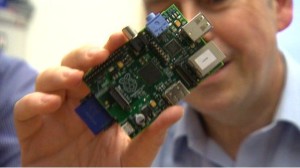How can smartphone manufacturers stand out?
 What are the best ways for manufacturers of smartphones and other handsets to distinguish themselves in the market today? With the increasing dominance of Samsung and Apple phones (they sell about 50% of all smartphones produced now), their rivals are becoming increasingly desperate to get a foothold in the market. They want to ensure that they get as big a slice of the smartphone pie as possible.
What are the best ways for manufacturers of smartphones and other handsets to distinguish themselves in the market today? With the increasing dominance of Samsung and Apple phones (they sell about 50% of all smartphones produced now), their rivals are becoming increasingly desperate to get a foothold in the market. They want to ensure that they get as big a slice of the smartphone pie as possible.
There have already been plenty of rumours about a new cut-price iPhone – presumably as Apple’s only mobile products are aimed at the upper end of the market and this will allow them to dominate across the entire horizontal. And it’s hard to argue with the sales figures from Samsung over the last twelve months. Not only are they now outselling the iPhone 6 with their flagship Galaxy SIII but they have leapfrogged Nokia to be the world’s biggest mobile producer by handsets sold.
Many are claiming that there’s a very obvious reason why Samsung is doing so well. We would agree – it seems to make perfect sense. The reason Samsung sells so many phones is because it’s flooded the market with a huge variety of Android smartphones for just about every imaginable niche. It has got high powered camera phones, dedicated media playing phones, phones that are good for gaming and others that are good for business. And most, importantly of all, it has a range of phones at every possible price point.
Samsung’s arsenal of mobiles starts with the sub-£100 cheapies that networks can give away on budget contract or, alternatively, you can pick up in the supermarket for your kids or to keep as a spare. And they go all the way up to the mighty Samsung Galaxy SIII with its mighty 8MP camera, gorgeous screen and lightning-fast quad-core performance. No matter how much you’ve got to spend or what sort of phone you’re after, chances are there’s a phone for you. Conversely, if you want an Apple iPhone, even if you’ll put up with a tired old iPhone 4 (a 30 month old model) you’ll be looking at paying more than £600 over the course of your contract. So it seems much of Samsung’s success is attributable to the breadth and depth of their smartphone offering.
But not every mobile manufacturer is going down this route. A top Sony executive has claimed that Sony Mobile might withdraw from the entry-level smartphone market. The claim is that they don’t want to compromise the brand with sub-standard products but cynics might see a relationship between Sony’s statements and the terrible Xperia J which came out last year.
Instead, Sony are potentially going to be focussing solely on the pricier smartphone for the more well-to-do customer. This is backed up by the latest announcement fresh from the Consumer Electronics Show in Vegas. Sony’s most impressive handset yet will be the Xperia Z and it comes complete with a huge 1080p screen, 2 gigs of RAM a quad-core CPU and, of course, 4G connectivity. It’s due out in March but all this comes at a price – it’s looking like the Xperia Z will set you back more than £500 just for the phone.
By concentrating on high-end expensive phones Sony are helping they will gain traction as a premium brand in customers’ eyes and be distinguished from other companies in this way. Sony want to sell more but they also want their phones to be immediately recognisable as high quality.This definitely seems to be their tactic for the future as CEO Kaz Hirai has directly confirmed his aim to concentrate on the high end.
It’s not just Sony who are trying out this new tactic though. HTC have long had a reputation for producing great phones for cheap but in recently months they too been trying to produce a smaller number of higher quality smartphones rather than relying on a “spray and pray” strategy. Similar murmurings have been emanating from Motorola Mobility too so it may well turn out to be a larger trend.
What’s your take on all this? Is Samsung’s success really down to its range of handsets. Will companies actually do better by focussing on fewer better-quality phones? And do you like the look of Sony’s Xperia Z?
 Nokia
Nokia  An IT consulting and technology firm in Cambridge has managed to get a mobile network up and running on a Raspberry Pi board.
An IT consulting and technology firm in Cambridge has managed to get a mobile network up and running on a Raspberry Pi board. 


Recent Comments